Apparatus measures single electron's radiation to try to weigh a neutrino
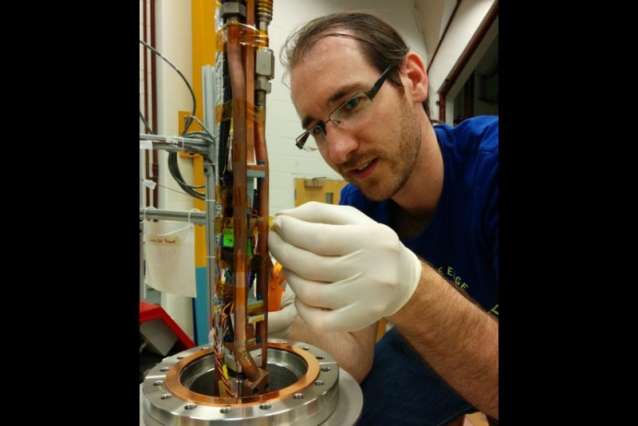
University of Washington physicists are part of a team that made a step forward in their efforts to pin down the mass of a neutrino, an elusive subatomic particle that played a role in the formation of the universe.
A paper published this month in Physical Review Letters shows that UW researchers and collaborators have managed to detect the radiation flung off by a single electron, a key step in their new strategy to pin down the neutrino's mass.
The ultimate goal is to measure the weight of the neutrino. Scientists used to think the subatomic particle had no mass, but results starting in 1998 turned that idea on its head.
"Neutrino mass not being zero is the only definitive example where a prediction of the standard model of particle physics has been contradicted by data," said co-author Hamish Robertson, a UW professor of physics.
The UW scientists are part of Project 8, a group of six institutions that seeks to measure the mass of the neutrino. Collaborators on the new study are at the Massachusetts Institute of Technology; the Pacific Northwest National Laboratory; the University of California, Santa Barbara; the National Radio Astronomy Observatory in Virginia; and the Karlsruhe Institute of Technology in Germany.
The new paper shows they were able to track electrons from radioactive decay inside an apparatus on the UW campus for several milliseconds, long enough to make a rough measurement of a single electron's energy without disturbing it. Next will be relating that electron's energy to the neutrino's mass.
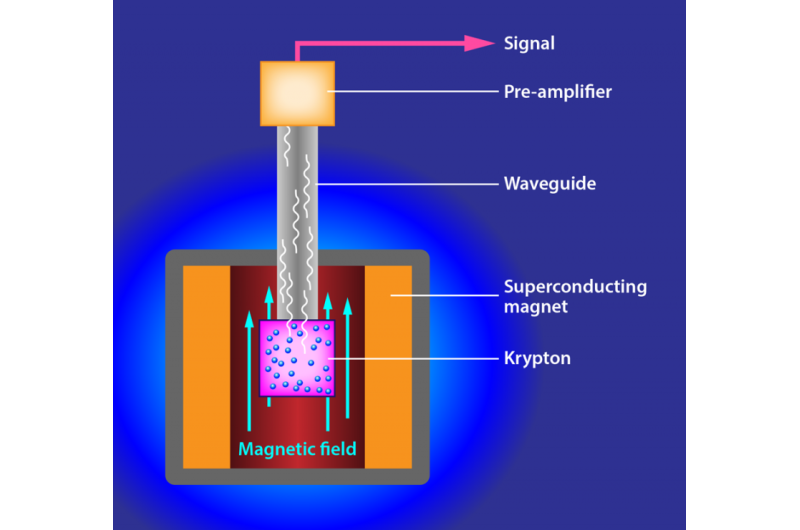
"We want to know the mass of the neutrino because we want to understand how the enormous skeins and clusters of galaxies formed from the uniform early universe," Robertson said.
Measuring the neutrino's mass could also help explain the physics of very-high-energy reactions and help develop a new standard model of particle physics, he added.
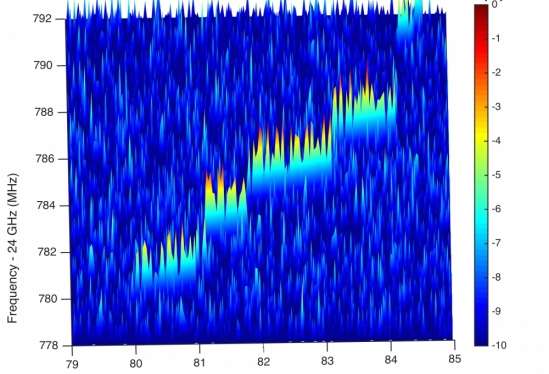
The core of the apparatus, located in the UW's physics building, is a low-pressure gas cell about the size of an espresso cup inside a strong 1-tesla magnet. The cell contains a small amount of metastable krypton-83 gas, a radioactive isotope that spews out electrons as its nucleus undergoes radioactive decay. These ejected electrons are then forced into a circular orbit by the magnetic field and emit cyclotron radiation, the electromagnetic waves emitted by charged particles as they move through a magnetic field. A detector measures the waves' frequency, around 25 billion cycles per second, to gauge the electron's energy.
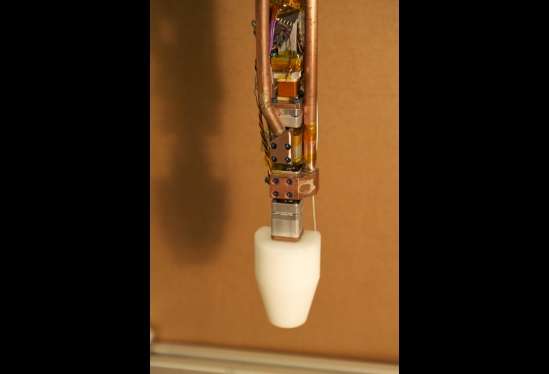
Neutrinos also are created in radioactive beta decay. Their existence, first predicted by theoretical physicist Wolfgang Pauli in 1930, is needed to ensure that beta decay conserves energy and angular momentum. This experiment aims to measure the energies of the electrons emitted in beta decay and compare them to the total energy of the reaction. If the neutrino has mass, the ejected electron cannot have an energy equal to the total amount, since (according to Einstein's famous equation, E=mc2, relating energy and mass) some of this energy must have been used to make the neutrino.
The mass of the unseen neutrino can therefore be measured by carefully tallying the energy of the emitted electron to figure out how much energy is missing.
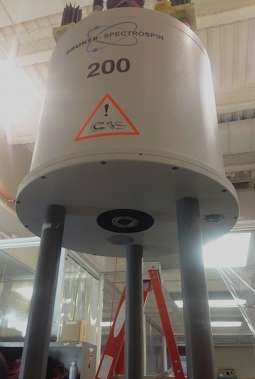
The current detector only has a resolution of about 15 electron volts, which is too imprecise to measure the neutrino's mass. The UW team is now working to build a bigger apparatus and better precision for the energy measurements. Robertson believes the ultimate precision could be as low as 0.04 electron volts, much lower than any existing method. But he says it will take years to get there.
The researchers have named the new technique cyclotron radiation emission spectroscopy, or CRES.
"In addition to being a step on the path to measuring the neutrino mass, I'm excited that we've made a new tool for measuring radioisotope decay energies in general," said Gray Rybka, a UW research assistant professor of physics. "It is my hope that the CRES technique ends up having even broader applications. We're exploring both ideas for testing fundamental physics and more practical applications."
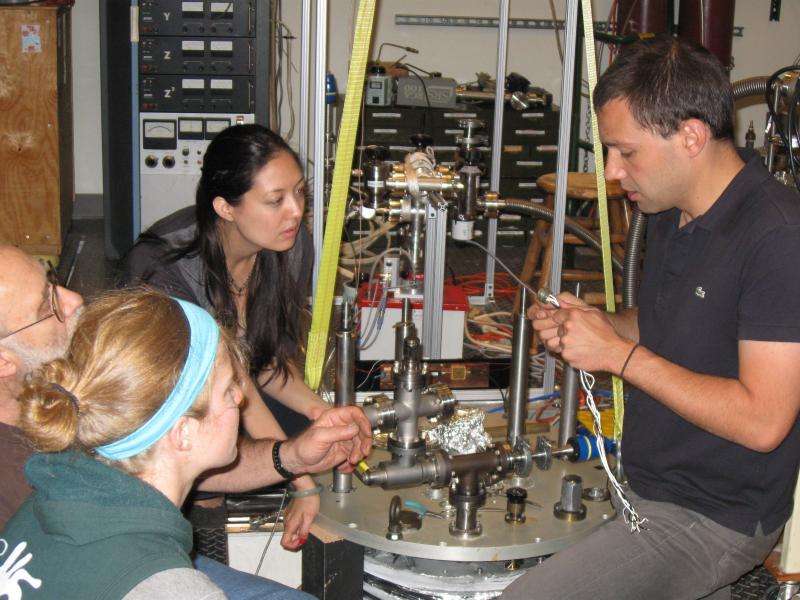
Many of the collaborators on this project met through the Sudbury Neutrino Observatory, a particle detector in a Canadian mine that collected some of the first measurements to show that the neutrino does have mass.
Rybka is also involved in a UW experiment using microwave radiation to find an axion, a hypothesized subatomic particle that would be a component of dark matter, a form of matter that cannot be detected but is thought to make up most of the mass of the universe.
More information: "Single-Electron Detection and Spectroscopy via Relativistic Cyclotron Radiation" Phys. Rev. Lett. 114, 162501 – Published 20 April 2015. dx.doi.org/10.1103/PhysRevLett.114.162501
Journal information: Physical Review Letters
Provided by University of Washington



















